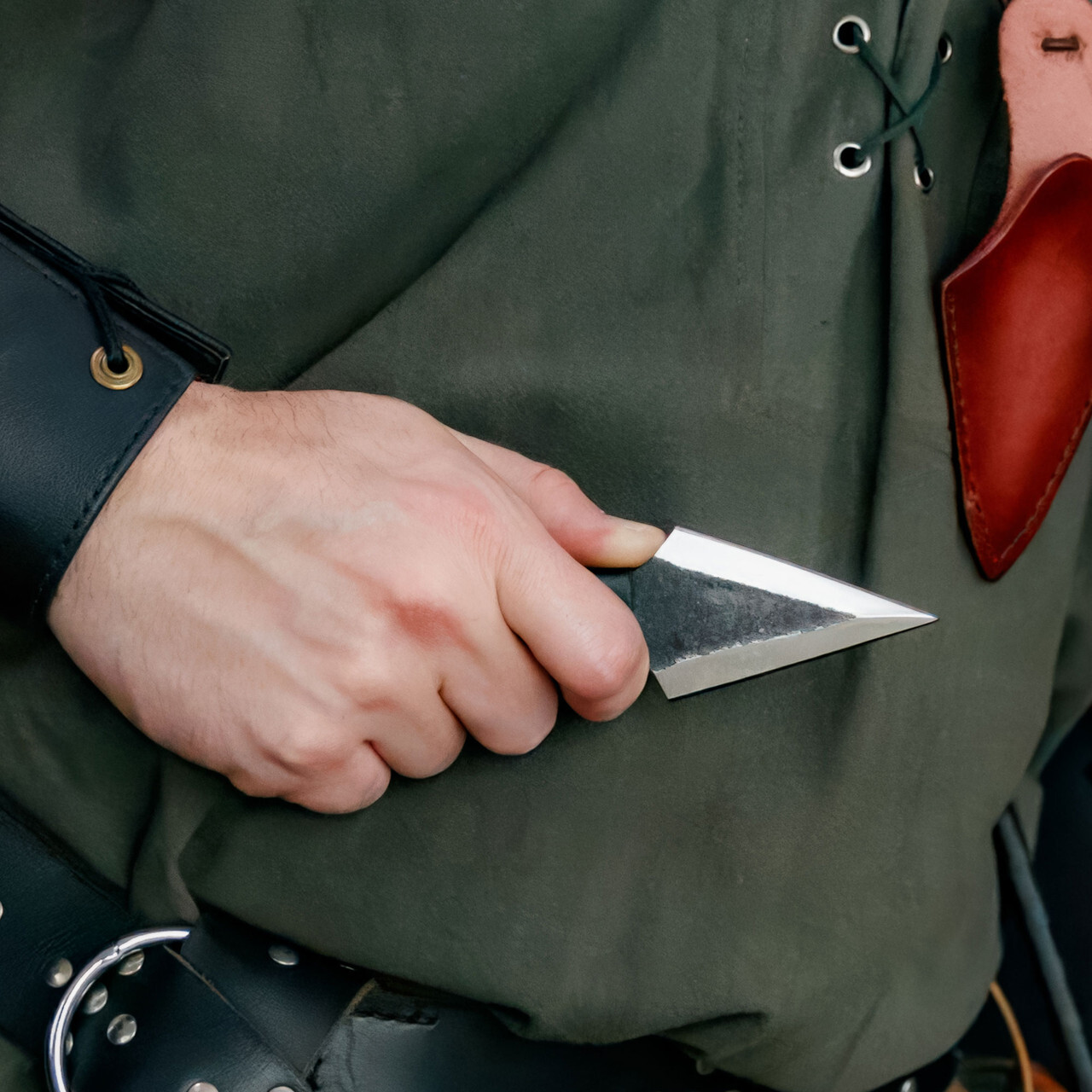Daggers: Basic Techniques for Self-Defense
Posted by SwordsSwords on Aug 13th 2025
In a perfect world, we'd never face a situation where self-defense is necessary. But for those unexpected moments, it's good to have some options. While firearms and certain martial arts training offer robust defense capabilities, a dagger can also be a surprisingly effective tool in close-quarters combat. However, it's crucial to understand that a dagger is a last resort.
This blog post will provide a fundamental understanding of daggers use for self-defense. We'll explore essential elements like grip, stance, and footwork, along with some basic strikes and disarming techniques. Remember, this information is for educational purposes only. For real-world self-defense proficiency, seeking training from a qualified instructor is paramount.

Taking Control: Grip, Stance, and Footwork
Using a dagger effectively starts with proper control. A strong, comfortable grip allows for precise strikes and efficient defense. There are two main grips for dagger self-defense:
- Forward Grip: Wrap your dominant hand firmly around the handle with your thumb resting on the spine of the blade for added control.
- Reverse Grip: Grip the handle similarly but with your thumb along the side of the blade for increased power in thrusting attacks.
Now, let's talk about posture. Imagine a boxer's stance – feet shoulder-width apart, knees slightly bent, and weight evenly distributed. This stance provides stability and agility, crucial for maneuvering in close quarters. Footwork mirrors this principle. Maintain a light shuffle, keeping your options open to evade or advance as needed.
Strikes and Disarms: Daggers Essential Techniques
While a dagger can inflict serious injury, the goal in self-defense is to disable your attacker and create an escape opportunity. Here are a couple of basic techniques:
- The Forward Thrust: This is a quick and effective strike delivered from the forward grip. Extend your arm straight with the dagger pointed forward, aiming for soft targets like the throat, groin, or solar plexus.
- The Upward Slash: This technique utilizes the reverse grip. With a quick flick of the wrist, slash upwards targeting the attacker's forearm or bicep to disarm or disable their attack.
Disarming an opponent requires precise timing and controlled aggression. Here's a simplified example:
- The Trap and Redirect: As your attacker lunges, use the strong side of your forearm to block their strike while simultaneously trapping their attacking arm with your weak hand. This creates an opening. Quickly shift your dagger hand and deliver a controlled thrust to a vulnerable area, forcing them to release their weapon.
The World of Daggers
Beyond self-defense, daggers have a rich and fascinating history. They come in a wide variety, each with unique characteristics and purposes. Here's a brief look at some types of daggers:
- Thrusting Daggers: Designed for piercing attacks, these daggers often have a slender blade and sharp point. Examples include the European rondel dagger and the Afghan pesh-kabz.
- Double-Edged Daggers: These versatile daggers can be used for both thrusting and slashing attacks. The iconic historical dagger from the medieval period is a prime example.
- Fantasy Daggers The realm of fantasy is filled with cool daggers and fancy daggers boasting unique designs and magical properties.
Seeking the Right Training
Remember, this blog post provides a mere glimpse into dagger self-defense. Real-world proficiency requires dedicated training under a qualified instructor. Here's why:
- Safety First: A skilled instructor will emphasize safety protocols to prevent accidental injuries during training.
- Muscle Memory: Effective dagger use becomes instinctive through repetitive practice, something a good instructor can facilitate.
- Advanced Techniques: Beyond basic strikes and disarms, training delves into more complex scenarios and defensive strategies.
- Situational Awareness: Self-defense isn't just about using a weapon. A qualified instructor teaches situational awareness and de-escalation techniques to avoid violent confrontations whenever possible.
The Final Word
A dagger can be a valuable tool for self-defense, but only as a last resort and with proper training. Remember, your best defense is avoiding dangerous situations altogether. However, if faced with a threat, understanding basic dagger techniques and seeking professional instruction can significantly improve your ability to defend yourself. If you are looking for the daggers for sale options you can explore the swordsswords.com fro the supper amazing and affordable options.

